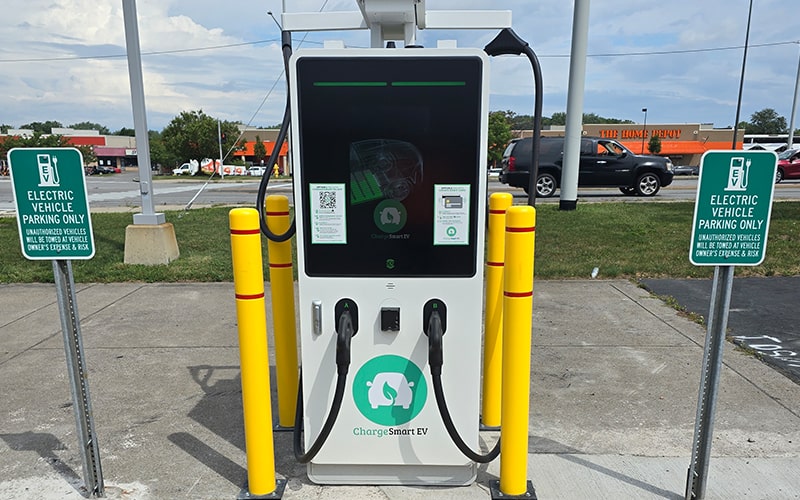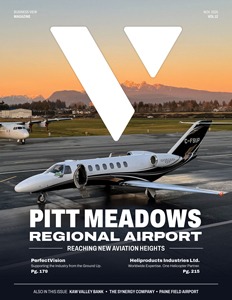Building the Future of Digital Infrastructure
Supporting the Networks That Power Modern Life Through Collaboration and Expertise
Before Colliers Engineering & Design became a national name in infrastructure and telecom, it began with survey stakes, drafting tools, and a vision for better-built communities. Founded in 1984 as Maser Consulting, the firm started with a focus on civil site design, municipal traffic, and surveying—laying the groundwork for what would become a multidisciplinary leader supporting the networks that power modern life. When the company rebranded in 2021 under the Colliers banner, it entered a new chapter of growth and innovation while preserving its original mission: delivering exceptional service through collaboration, expertise, and integrity.
“Richard’s original vision was to provide high-quality design and engineering services with a strong client focus, and that ethic still guides us,” says Michelle Kang, Discipline Leader of the Telecommunications Department. Today, the company counts more than 3,000 professionals in over 80 offices across 28 states, supported geographically by regional hubs from Irvine, CA to Rochester, NY. Leadership continuity helps a small company feel within a national platform, and strategic acquisitions broaden both capability and reach.
From Vision to Leadership
The journey from Maser Consulting to Colliers Engineering & Design includes a pivotal leadership handoff. “The transition from our founder, Richard Maser, to our current CEO, Kevin Haney, in 2020 is a key milestone,” Kang says. “In 2021, we rebranded to Colliers Engineering & Design, and we continued a disciplined expansion strategy.”
That growth has been deliberate. Over a recent four-year stretch, the firm completed ten acquisitions, the largest of which included Bergmann Engineers in Rochester and KFW Engineers in San Antonio, along with MG2 Design in 2024, expanding capacity in landscape and architecture. “The growth is significant, yet the model remains client-centred and multidisciplinary,” Kang adds.
A Comprehensive Approach to Design and Development
Colliers Engineering & Design operates as a full-service provider across architecture, civil and structural engineering, geo-environmental science, interior design, landscape architecture, planning, project management, surveying, telecommunications and utilities. Licensed professionals support projects in every state, coordinating local knowledge with national standards.
“We deliver end-to-end solutions for new and existing developments,” Kang says. “In telecom, that means comprehensive site acquisition and engineering for all site and structure types that house wireless equipment. One day, we may receive a hundred construction drawing packages for network upgrades; the next, we are asked to provide expert testimony to secure zoning approval in a complex jurisdiction.”

The telecom team self-performs most engineering deliverables and draws on in-house civil, structural, electrical, survey, geotechnical, and environmental groups as needed. That integration keeps quality consistent and timelines tight. The team supports projects in all 50 states, with telecom-specific staff in 12 offices and access to the broader network of more than 80 for local support and jurisdictional expertise.
Telecom and Fiber—Two Pillars of Connectivity
On the fiber side, reach and repeatability matter as much as precision. “Our group designs everything from a simple fiber extension into a building to entire municipal and county networks,” says Petros Tsoukalas, Telecom & Utility Services Division Director. The scope spans backbone and backhaul, fiber-to-the-home and fiber-to-the-premises, utility relocation for road programs, and a comprehensive suite of permitting services across the lower 48.
A distinctive feature is the firm’s geospatial approach. “We build design capability on ArcGIS so we can work directly in a client’s schema,” Tsoukalas explains. “That makes handoffs seamless and allows field teams and office designers to collaborate in real time, reducing errors and improving speed to market.”
The Power of Partnership and Collaboration
The telecom market moves in cycles, with bursts of rapid activity. CED’s operating model is built around scalable, high-quality partnerships. “A core component of our strategy is building strong, trustworthy relationships,” Kang says. “We train vendor partners in our engineering methodology so we can maintain consistent quality as workloads surge.”
Collaboration extends to manufacturers. “We work with PerfectVision, Sabre Industries, SitePro1, Andrew, and Metrosite,” she adds. “One collaboration produced more than thirty bolt-on retrofit steel kits addressing over 80 percent of overstressed mount remediations. That innovation cut steel turnaround times in half, to under three weeks—a meaningful gain for our customer.”
The firm is also part of the Mobile Infrastructure Engineering Consortium (MIEC), alongside Congruex, Kimley Horn, Tower Engineering Professionals, and Paul J. Ford. “The consortium strengthens engineering standards for mobile network operators and infrastructure owners,” Kang notes. “Over five years, our collective teams have worked on more than 90,000 sites, evolving from trusted partners to strategic consultants connecting engineering, construction, maintenance, and inspection.”
Relationships That Drive Results
For fiber builds, local knowledge often determines whether permits are issued quickly or stall. “We build relationships at every level,” Tsoukalas says. “We meet the local contacts who assign work and develop top-down relationships with corporate leaders, which helps replicate success in new markets.”

Many fiber leaders serve on Utility Coordination Committees. “Being involved gives us real insight into jurisdictional requirements,” he explains. “That reduces permit rejections and accelerates approvals. The result is faster speed to market, which is what matters most to clients.”
A dedicated corporate business development team supports these efforts, and the firm often hires professionals with experience inside fiber companies. “They bring internal context and relationships that are hard to see from the outside,” Tsoukalas adds. “That helps us anticipate issues and plan realistically.”
Embracing Technology and Data Integration
Scale in telecom demands robust software. “We continuously evaluate platforms, especially those with strong AI capabilities,” Kang says. “Our backbone for workflow, purchase orders, and invoicing is OneVision. We manage thousands of active projects, so we need a platform that connects teams, protects data integrity, and supports quick decisions.”
Consortium work reinforces that digital backbone. “MIEC members use a shared, engineering-grade infrastructure intelligence platform,” Kang explains. “It improves efficiency and quality control, and it lets us maintain key data points across past projects, producing uniquely valuable reports for customers that link planned upgrades to budget impacts.”
For fiber, ArcGIS serves as both a drafting board and a field notebook. “Designers use iPads in the field to validate and update data in real time,” Tsoukalas says. “If a new road appears or a building footprint changes, the update is instantaneous. In the office, multiple designers can work on the same project at once—a major gain over legacy workflows.”
A Culture of Growth and Empowerment
Culture is the connective tissue that keeps a fast-growing firm cohesive. “Even though we are large, it feels like a small company,” Kang says. “In the seven years I’ve been here, we’ve grown from about 800 people to more than 3,000, and the leadership team remains largely intact. That continuity, combined with talent from strategic acquisitions, keeps us agile and aligned on values.”
Career development is structured and transparent. “We have a clear progression from entry-level roles to management,” Kang notes. “Our three-month performance-evaluation process emphasizes meaningful feedback and the resources each person needs to advance. Compensation aligns with performance, and we’re open about goals and direction.”
An entrepreneurial mindset gives managers ownership. “Leaders run their business units with accountability,” she adds. “That hands-on approach accelerates personal and professional growth and attracts people who want to build.”
Strategic Investment and Sustainable Growth
Investment decisions focus on capacity, capability, and durability. “The acquisition of Terra Consulting Group in May 2025 doubled our legacy team overnight,” Kang says. “It expands service lines and creates new opportunities for both legacy companies. Separately, our telecom team has also grown organically by about 50 percent this year. The market is active, and we’re scaling responsibly.”

Diversification plays a key role. “We invest in adjacent sectors like EV infrastructure, battery storage, and fiber huts,” she continues. “These align with long-term sustainability and gives clients more comprehensive options. We don’t have immediate plans for new facilities, but remain focused on strategic hiring and empowering leaders to pursue larger opportunities.”
Public Investment and the Decade Ahead
Federal programs are changing the equation for underserved and rural communities. “The Rural Digital Opportunity Fund and the BEAD program are primary drivers of growth over the next five to ten years,” Tsoukalas says. “Our teams already support clients with grant strategy and applications, including work with tribal nation partners. These programs make projects viable in places where economics are challenging, and they’ll shape the market for a long time.”
International reach is expanding too. “With the acquisition of MG2, we now have a Shanghai office,” Kang says. “That opens the door for selective international collaboration. We plan to diversify clients, regions, and services over the next five years, reinforcing our core while pursuing new opportunities at home and abroad.”

Digitalization sits at the center of that plan. “Clients are pushing toward data-driven operations,” Kang notes. “Platforms like the consortium’s infrastructure-intelligence system, soon to be commercialized as Telorics, help owners capture the data they need today and the insights they’ll want tomorrow. That supports scalable, portfolio-level decisions about upgrades, maintenance, and capital deployment.”
Resilience remains a constant. “Our customers count on us to be ready when they are,” she adds. “We track industry shifts closely and adapt with the market. Diversifying our client base and sharing resources across disciplines keeps us steady through the cycles.”
Engineering a Smarter Tomorrow
The promise of digital infrastructure is both practical and human. Networks enable classrooms, clinics, and small businesses to operate at full potential—the context in which Colliers Engineering & Design builds.
“We’re not just producing drawings; we’re helping communities connect and thrive,” Kang says. The work stretches from steel mounts on urban rooftops to fiber broadband trenches along county roads, from AI-assisted portfolio planning to a field engineer verifying a pole location before a permit is filed. Every part of the system matters.
Tsoukalas agrees. “Speed to market is essential, but speed without quality doesn’t last,” he says. “The reason we invest in people, partnerships, and platforms is so we can deliver both.”
AT A GLANCE
Who: Colliers Engineering & Design
What: A multi-disciplinary engineering, architecture, design and consulting services firm
Where: HQ is in New Jersey, and the firm has offices throughout the U.S., spanning many states
Website: www.colliersengineering.com
PREFERRED VENDORS/PARTNERS
PerfectVision: www.perfect-vision.com
PerfectVision is a global telecommunications solutions leader based in Little Rock, Arkansas, founded in 1979 , committed to connecting businesses and consumers to technology. As innovators and pioneers in the industry, we support all aspects of connectivity including wireless and broadband infrastructure products, customized technology solutions, and subscriber retailer programs.
ANDREW an Amphenol company: www.andrew.com
ANDREW® provides simple, efficient, enduring and sustainable solutions to mobile network operators and enterprises, advancing seamless connectivity everywhere, outdoors and indoors. Our global team is passionate about pushing the industry forward and creating a better connected future for all. Explore our offerings on our website.





